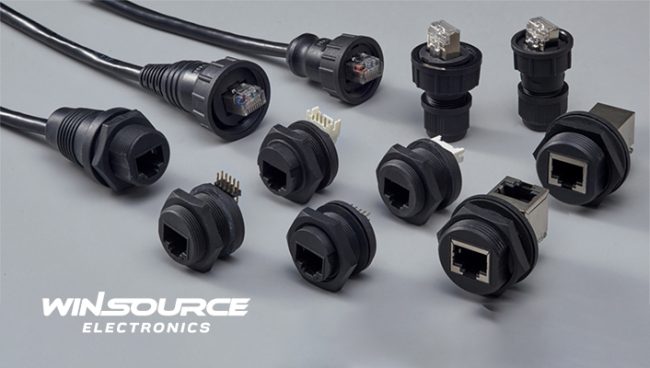
What is an Ethernet Connector and How Does it Work?
An Ethernet connector is a hardware device that facilitates the physical connection between networked devices for data transmission. It plays a crucial role in enabling communication within local area networks (LANs) and wide area networks (WANs). Ethernet connectors follow specific standards to ensure compatibility and interoperability across diverse networking environments.
Structure of Ethernet Connectors:
Ethernet connectors, like the RM3-138A9V1F, typically consist of multiple components designed to secure and transmit data reliably. These components may include pins, shielding, insulation, and locking mechanisms. The connector’s structure ensures that electrical signals can be transmitted between connected devices efficiently.
Functionality:
The primary function of an Ethernet connector is to establish a physical connection between network devices, allowing them to exchange data. The connector facilitates the transmission of electrical signals carrying digital information. This process involves several key steps:
- Connector Attachment: Devices, such as computers, routers, or switches, are equipped with Ethernet ports. The connector on the end of an Ethernet cable, often an RJ45 modular connector, is inserted into the port on the device.
- Pin Configuration: Inside the Ethernet connector, there are multiple pins, each assigned a specific function according to the Ethernet standard. For example, in an RJ45 connector, there are eight pins, each responsible for transmitting or receiving a different part of the data signal.
- Twisted Pair Configuration: Ethernet cables commonly use a twisted pair configuration, where pairs of wires are twisted together. This configuration helps minimize electromagnetic interference (EMI) and crosstalk, enhancing signal integrity.
- Data Transmission: Once the connector is securely attached and the pins are aligned, data transmission can occur. Digital signals are sent in the form of electrical pulses through the twisted pairs of wires.
- Signal Reception: At the receiving end, the Ethernet connector interprets the electrical pulses and converts them back into digital data, completing the data transmission process.
The RM3-138A9V1F Ethernet Connector
One of the notable advancements in Ethernet connector design is the RM3-138A9V1F. This connector is designed to meet the evolving needs of high-speed data transmission and signal integrity. The RM3-138A9V1F incorporates advanced materials and precise engineering to deliver optimal performance in a variety of applications.
One of the key features of the RM3-138A9V1F is its robust construction, which includes shielding to minimize electromagnetic interference (EMI). EMI can degrade signal quality and impact overall network performance. By addressing this concern, the RM3-138A9V1F ensures that data signals remain clear and undisturbed, contributing to improved signal integrity.
Mounting Style and Its Impact on Signal Integrity
The mounting style of an Ethernet connector is a critical factor in determining its signal integrity. Different applications may require different mounting styles, and selecting the appropriate one is essential for optimal performance.
The RM3-138A9V1F supports various mounting styles, providing flexibility in design and application. Proper mounting ensures that the connector maintains a stable connection, minimizing signal disruptions caused by vibrations or external forces. Whether it’s board mount, panel mount, or free-hanging, the chosen mounting style should align with the specific requirements of the application.
Modular Connectors: The Role of RJ45 and RJ11
Modular connectors, such as RJ45 and RJ11, are widely used in Ethernet connectivity. Understanding their design principles is crucial for achieving optimal signal integrity and performance.
The RJ45 connector is a standard modular connector used in Ethernet networking. Its design follows specific principles to ensure reliable data transmission. The connector consists of eight pins, each assigned to a specific function in the Ethernet protocol. The precise arrangement of these pins is critical for maintaining signal integrity and preventing cross-talk between adjacent channels.
RJ45 connectors are commonly used in twisted pair Ethernet cables, and their design includes features to reduce electromagnetic interference. This design consideration is particularly important in high-density networking environments where multiple cables are closely packed. By minimizing interference, RJ45 connectors contribute to stable and reliable data transmission.
On the other hand, RJ11 connectors are primarily used in telephone applications. While similar in appearance to RJ45 connectors, RJ11 connectors are designed for smaller-scale communications. They typically have fewer pins, with four or six conductors, and are commonly found in telephone cables.
Optimizing Performance Through Connector Design
To optimize the performance of Ethernet connectors, several design principles must be considered. These principles go beyond individual connector types and apply to the broader spectrum of network connectivity.
Impedance Matching: Maintaining impedance matching throughout the network is crucial for signal integrity. Mismatched impedance can lead to signal reflections and distortions, affecting data transmission. Ethernet connectors, including the RM3-138A9V1F, are designed with impedance considerations to minimize these issues.
Crosstalk Mitigation: Crosstalk occurs when signals from one channel interfere with signals in adjacent channels. Proper connector design, such as the twisted pair configuration in RJ45 cables, helps minimize crosstalk. Shielding in connectors like the RM3-138A9V1F provides an additional layer of protection against unwanted interference.
Connector Materials: The materials used in connector construction play a vital role in signal integrity. High-quality materials with good conductivity and durability ensure reliable connectivity over the connector’s lifespan. The RM3-138A9V1F, for instance, may utilize advanced materials to meet the demanding requirements of modern networking.
Ergonomics and Durability: Connectors must be designed with usability and durability in mind. Ease of installation, secure locking mechanisms, and resistance to environmental factors contribute to a reliable and robust connection. These factors are crucial for maintaining performance over time.
Ethernet connector design principles are at the forefront of ensuring high-quality data transmission in networking applications. Rigorous attention to signal integrity and performance optimization is essential for keeping pace with the increasing demands of modern communication systems.
WIN SOURCE can be a reliable electronic component distributor, especially for a diverse range of ethernet connectors and other components to support engineers in their pursuit of designing robust and efficient network solutions.
© 2025 Win Source Electronics. All rights reserved. This content is protected by copyright and may not be reproduced, distributed, transmitted, cached or otherwise used, except with the prior written permission of Win Source Electronics.

COMMENTS